A Look At Red Earthenware Made In Mason, Ohio
By Justin W. Thomas - February 28, 2020
In June of 2016, I was introduced to a type of pottery from the 19th century American red earthenware industry that I had no idea existed. While attending Historic Eastfield Villages ceramic conference, just outside of Albany in East Nassau, N.Y., otherwise known as Dish Camp, I recall walking into the villages church and seeing pottery and archaeological artifacts from all over America displayed around the room. I was immediately drawn to a selection of wares that Ohio potter Greg Shooner had brought from his personal collection. Greg was one of the presenters that year, speaking about the red earthenware made in Warren County, Ohio, in the 1800s, and demonstrating how some of this production was made. I was instantly mesmerized by some of the beautifully decorated wares from Mason, Ohio. They were like nothing else I have encountered from the American pottery industry of the 19th century. I remember thinking to myself as I drove home that if I had not paid close attention to Gregs presentation that I would have never recognized this type of production as American. But then my thoughts quickly transformed into the concept that this type of production should be recognized on a regional and national level. It should be represented in major museums across the country. And I was amazed to learn that it is largely unknown today. It is what I now consider to be a treasured form of production, adorned in one of the most colorful slip decorations created anywhere in America. A Special Style of Production from Mason, Ohio Located 23 miles northeast of Cincinnati, in Warren County, Ohio, the city of Mason is named after Revolutionary War veteran Major William Mason (1760-1830), who purchased 640 acres of land on June 1, 1803. This land now forms the area surrounding downtown Mason today. Originally known as Palmyra, the area would be renamed Mason two years after the Majors death in 1832, and most recently becoming a city in 1971. The area was largely recognized for its agricultural growth in the 19th century. Warren County also has a Revolutionary War connection. The county was named after Dr. Joseph Warren (1741-75) from Boston, who died fighting at the Battle of Bunker Hill in Charlestown, Mass., on June 17, 1775. Warren left a lasting legacy in the American patriotic movement, serving as president of the Revolutionary Massachusetts Provincial Congress and sending Paul Revere (1735-1818) on his infamous midnight ride to Lexington at the dawn of the American Revolution. Warren County is considered one of the earliest pottery production centers in the Midwest, dating to the early 19th century, and a lot of the areas production happened around Route 42. Beginning in the early 1800s, this road was known as the Accommodation Stagecoach Line running through much of central Ohio, starting with a historic terminus at the Ohio/Kentucky state line in Cincinnati to Cleveland. The wares were typically transported by horse-drawn wagons in this region, and for some of the potteries, their proximity to this route was important to the success of their business. Among the areas first group of pioneering potters was George Foglesong (Vogelsang) (1784-1831), who migrated to America from Germany in the late 18th century as an indentured servant to John Snavely in Washington County, Md. He traveled to America to learn about the pottery trade. As part of the arrangement, Foglesong signed a contract with Snavely agreeing to work for him for a particular amount of time. Afterwards, Foglesong relocated to Lebanon, Ohio, where he operated a pottery business as early as 1805, until around the time of his death in 1831. Other red earthenware potters in Lebanon succeeded his production until the 1880s. Elsewhere in the area, Thomas Swift (d. 1836) established a pottery in Waynesville, Ohio, as early as 1808. He is considered to be one of the first Quaker potters in the area, operating his pottery shop behind a brick Federal style house that he built in 1813. The first building was probably a log home, which was replaced by the brick structure. He also managed a grocery on his property, where he likely sold a lot of his wares. Founded by Quakers from North Carolina who opposed slavery, Waynesville and other areas in Warren County were connected to many escape routes tied to the Underground Railroad. The 1820 United State Federal Census identifies a free colored male living in the household of the Swift family. There were also significant businesses in Merrittstown, Springboro and Oregonia, as well as other locations where some of this production can be mistaken for wares made in Pennsylvania today. The abundance of potters was the cause of emerging towns in the 19th century, as a result of the Northwest Territory (Ohio, Indiana, Illinois, Michigan, Wisconsin, and part of Minnesota) being divided in 1800, and the state of Ohio forming on March 1, 1803. It also certainly helped that there were plenty of excellent clay sources found throughout Warren County. Potters relocated to the newly formed state from Kentucky, Maryland, New York, Pennsylvania, and apparently elsewhere in America. Arguably the most successful of any of the red earthenware potteries based in southwestern Ohio was that run by the Shakers in Union Village from circa 1820-50, where there were at least four different Shaker potters. But the business may have been operating a few years earlier, as well. Archaeological excavations found that they manufactured various types of utilitarian wares, including multi-colored slipware, as well as smoking pipes, drain pipe and bricks. There was an emphasis given to black glazes. The recovered forms include bowls, pitchers, plates, jugs, jars, bottles, crocks, chamber pots and flowerpots. Interestingly, the Union Village wares were shipped far distances since this was the only known Shaker pottery operating in America, reaching Shaker communities in New York, Kentucky and Ohio. Otherwise, the Warren County potteries typically manufactured their wares for local consumption, similar to how the country red earthenware potteries operated in places like western New York and rural New England. But as I noted, it is a specific type of production that I was drawn to that was reportedly manufactured at the Mason Pottery, as it would be known in the 19th century. According to author Cynthia L. Pauwels, who published Historic Warren County: An Illustrated History in 2009, The Mason pottery shop owned by William Jared and Silas Ballard drew customers from surrounding villages, although William Jared was apparently later convicted of murdering a local man, leaving Ballard as the sole owner in the latter years of the business. According to legend, There was only one ghost said to walk the streets once in a while in the quiet town of Mason. He was a man murdered by a potter named William Jared. He was pretty benign, though just hung around and folks saw him once in a while. Nevertheless, other Mason potters included John Jared and John Morgan. According to the 1860 United States Federal Census, Silas Ballard (ca. 1826-84) was listed as a 34-year-old potter in Mason, as early as 1860, with assets cited at 600-dollars. The census also indicates that he was born in Tennessee. This is perhaps the same Silas Ballard who is listed as a 24-year-old farmer in Campbell County, Tenn., in the 1850 United States Federal Census, located along the Kentucky border, roughly 35 miles north of Knoxville, and died there as well in 1884. However, there is no evidence to say Ballard apprenticed at a pottery business in Tennessee; this may have been a craft he learned in Warren County. Greg Shooner has conducted a great amount research into the Warren County potters; in fact, he has discovered that the primary focus was utilitarian household wares followed by garden pottery in the later period. Almost all of these wares were hand-thrown on the potters wheel, but Greg has recovered archaeological evidence at the site of the Silas Ballard pottery from just after the mid-19th century that proves they were manufacturing slab formed dishes. This is an ancient pottery technique that involves creating wares without a potters wheel and instead forming objects around molds or shaping them by hand. The wares that really caught my attention were the garden forms attributed to Silas Ballard sometime during the circa 1860-79 period. I suspect they more likely date from the late 1860s or 1870s. Local history is why the attribution exists today, even though there is currently no archaeological evidence to support it. The site of Ballards home and pottery are known, and privately owned. It is possible that archaeological evidence may someday further expand the knowledge about this type of production, which are typically large forms found in a small group of surviving objects today. The grand size of many of these objects may suggest they were produced for a higher-end market or larger estates, like those found in Cincinnati and the surrounding area that saw a growing population of nearly 220,000 people by 1870. This production may have been a reaction to the changing pottery industry in Cincinnati, which began to employ skilled English potters as early as the 1840s. However, it is also intriguing because these objects may predate the birth of the 1876-1956 American Art Pottery Movement, where Cincinnati became a major production center of artware, when the Rookwood Pottery Company was founded by Maria Longworth Nichols Storer (1849-1932) in 1880. The company came to fruition because of her experience at the Centennial Exposition in Philadelphia in 1876. This historic event is where some of the best manufacturers in Europe and the Far East exhibited their production to the American marketplace, largely influencing the American pottery industry. The forms that I have seen from the Mason Pottery decorated in this style are few, but they include large flowerpots, detached flowerpot saucers, and a variety of urns. The Mason Historical Society also owns a great two-piece garden urn. A few years ago, I photographed the lone example I own with my nephew, Jason, on the shore of Lake Erie in Cleveland. Nearly all of the wares that survive from this type of production today have been found in 20th century contexts of ownership in Ohio. The most recent example just surfaced while Ohio picker and collector, Clark Garrett Jr. was cleaning out his grandfathers old barn in Fairhaven, Preble County, Ohio, located along the Indiana border. This context is only about 35 miles northwest of Mason. The large flowerpot was found alongside three other red earthenware flowerpots attributed to the Shenandoah Valley from roughly the same period. Knowledge is Knowing Everyone has the right to his or her own personal preference, but I truly believe this is a special style of production from southwestern Ohio. The forms are well made, and the glazes are what transform these objects into beautiful pieces of work. I cannot recall seeing anything exactly like this from another American potter. The source of inspiration is unknown, but it may have been a response to create something different, setting itself apart from the variety of pottery and yellow glazed stoneware made at many of the factories in Ohio and the neighboring states in the Midwest. However, Silas Ballard may have also aspired to create a special line of pottery around the birth of the American Art Pottery Movement. For all that, I hope this type of production now resonates with American collectors and museums as a special style of production that deserves a lot more attention today. These forms are large, and the glazes are breathtaking. And if it were not for that day in June of 2016, when I listened closely to Greg Shooners talk on Warren County red earthenware, then I would not have known about this type of production that I wholeheartedly cherish today. Sources: Aument, Bruce, Patrick M. Bennett, Thomas Grooms, and Andrew R. Sewell. Encountering the Shakers of the North Family Lot, Union Village, Ohio: Simplicity Comes in All Forms The Shaker Ceramic Industries of Union Village, Volume 4 of a 4-Volume Monograph Series. Ohio Department of Transportation: Hardlines Design Company, January 30, 2009. Campbell County, Tennessee. 1850 United States Federal Census. Eidelberg, Martin, Alice Cooney Frelinghuysen, and Adrienne Spinozzi. American Art Pottery: The Robert A. Ellison Jr. Collection. New Haven, CT: Yale University Press, 2018. Barber, Edwin Atlee. The Pottery and Porcelain of the United States: An Historical Review of American Ceramic Art From the Earliest Times to the Present Day. New York: G.P. Putnams Sons, 1893. Mason, Warren County, Ohio. 1860 United States Federal Census. Pauwels, Cynthia L. Historic Warren County: An Illustrated History. San Antonio, TX: Historical Publishing Network, 2009. Quackenbush, Jannette Rae. Ohio Ghost Hunter Guide V: Haunted Hocking Ghost Hunter Guide. 21 Crows Dusk to Dawn Publishing, 2013. Shooner, Greg. List of Warren County Potters. Displayed at the Warren County Historical Society Museum. Lebanon, Ohio, 2006. Waynesville, Warren County, Ohio. 1820 United States Federal Census.

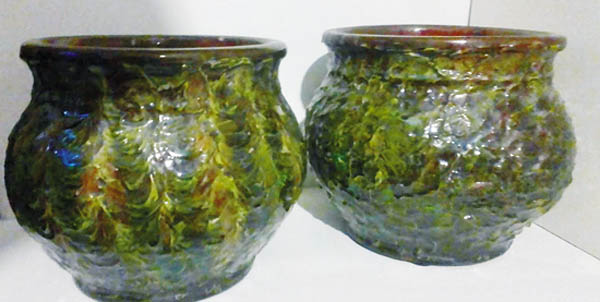
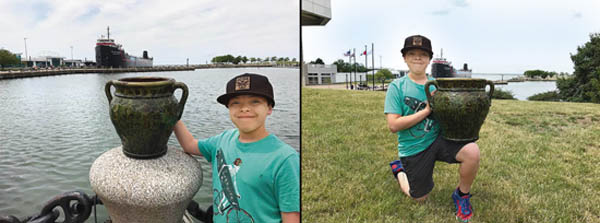
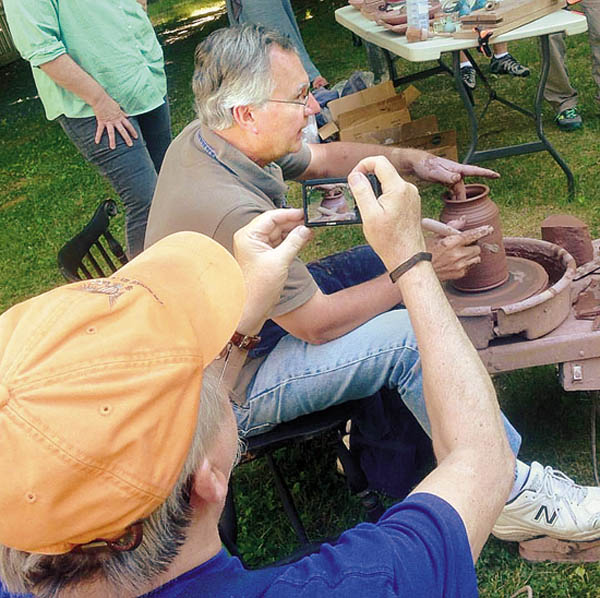




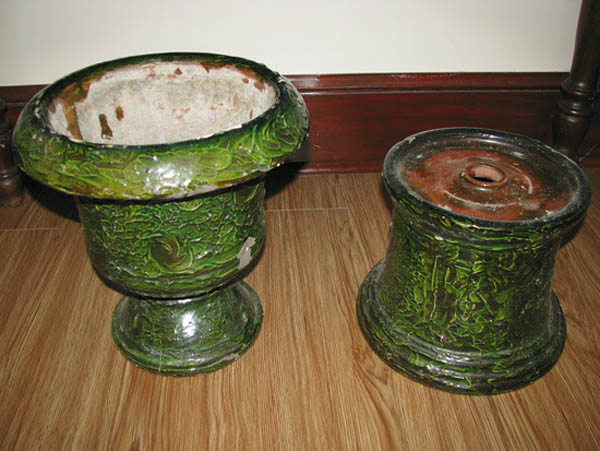
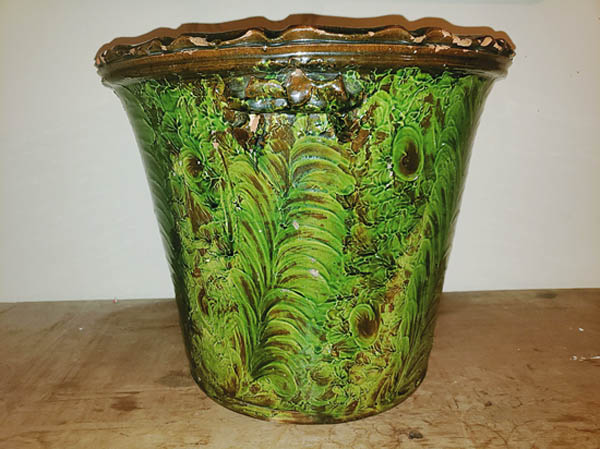
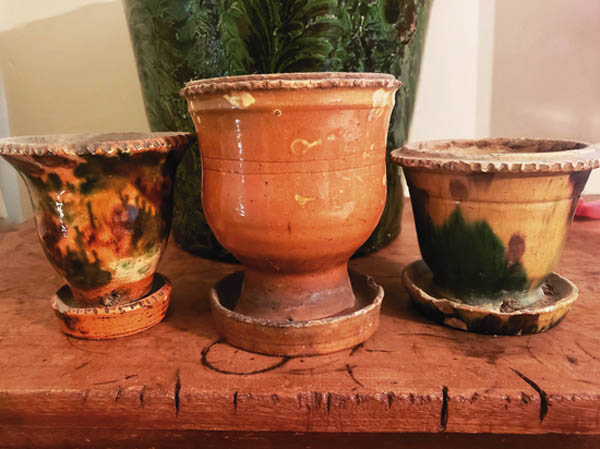

SHARE
PRINT